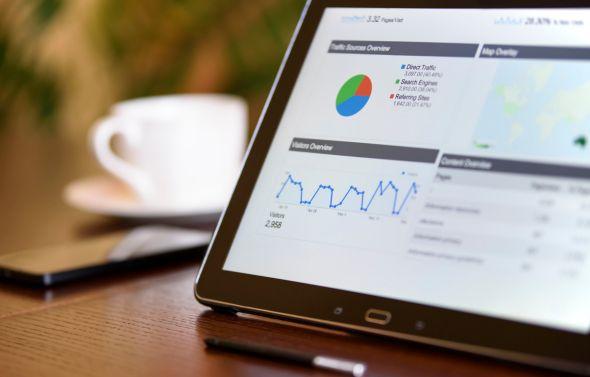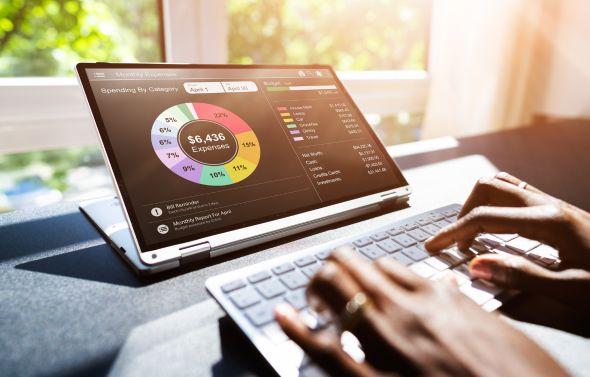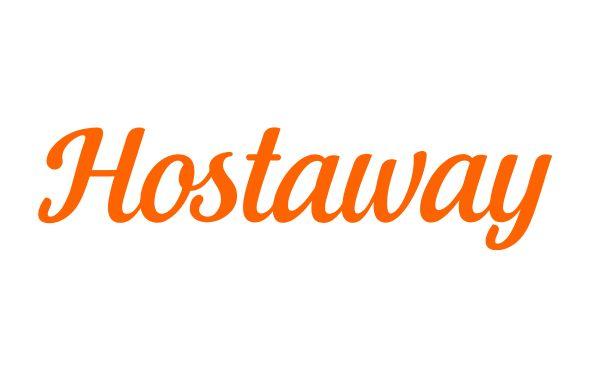Implementing New Property Management Software: A Complete 2025 Guide

Key Takeaways
2025 marks a pivotal year for upgrading property management software as guest expectations rise and competition tightens across vacation rental platforms.
Clear signs you’ve outgrown your current PMS include limited automation, poor financial visibility and the inability to manage multiple listings efficiently.
The best systems in 2025 offer dynamic pricing, unified inboxes, channel management, automated messaging and real-time owner portals.
Successful implementation depends on preparation, like cleaning up data, training staff, testing integrations and rolling out the system in phases.
Platforms like Hostaway stand out for combining essential tools with AI-powered features, helping property managers automate operations and future-proof their business growth.
The short-term rental industry has undergone significant changes in recent years, and 2025 is poised to be one of the most transformative yet. Guest expectations are higher than ever, competition across platforms is fierce and new technology is raising the standard for how properties are managed. For property managers and hosts, the question isn’t whether to embrace technology, it’s how to implement the right property management software that can support growth, streamline operations and deliver a better guest and owner experience.
Implementing new property management software may feel overwhelming at first. After all, switching systems can mean moving data, retraining staff and rethinking established processes. But when done thoughtfully, it becomes one of the most valuable upgrades you can make for your business. The right tools don’t just replace outdated systems, they open the door to automation, smarter pricing strategies, seamless channel management and transparent communication with owners.
In this guide, we’ll walk through everything you need to know about implementing new property management software in 2025, from recognizing the signs it’s time to upgrade, to selecting the best-fit solution, to ensuring a smooth transition

Why 2025 Is the Right Time to Upgrade
The short-term rental landscape is shifting in 2025 and the timing couldn’t be better for hosts and property managers ready to modernize their operations. Demand is climbing, supply growth is slowing and the revenue opportunities are real if you have the tools to capture them.
By mid-2025, U.S. short-term rental occupancy is projected to reach 54.9%, returning to pre-pandemic benchmarks. What’s driving the rebound? Supply growth cooled dramatically in 2024f alling from a 22% surge in 2022 to just 6.9% while demand continued rising at a healthy 7% year-over-year pace (AirDNA). Fewer new listings combined with steady demand means less competition and better income potential for those who can stand out.
Another trend is the rise of the luxury segment. High-end properties with distinctive amenities are commanding nightly rates of $1,000–$2,400, with some bringing in $300K to $350K annually. It’s proof that the right positioning supported by the right tools can dramatically increase returns.
If your current software leaves you struggling with manual tasks, clunky reporting or limited pricing capabilities, now is the moment to upgrade. Choosing modern property management software in 2025 isn’t just about keeping up, it’s about setting yourself up to scale with the industry’s next wave of growth.

Signs You’ve Outgrown Your Current System
The tools that got your business started aren’t always the ones that will help you grow. As your portfolio expands and guest expectations evolve, there comes a point when your existing setup starts to hold you back more than it helps.
One of the clearest signs that you have outgrown your PMS is difficulty managing multiple properties. If you’re bouncing between spreadsheets, inboxes and OTAs just to keep calendars in sync, that’s a sign your system isn’t scaling with you. Similarly, suppose things like cleaner communication and maintenance requests get lost in email threads or take too long to track. In that case, your software isn’t supporting the efficiency your guests and owners expect.
Another signal is weak visibility into your finances. Modern property management tools should make financial reporting simple, offering insights into performance, expenses and owner payouts in just a few clicks. If you’re still piecing together numbers manually or worse, struggling to reconcile data across platforms, you’re spending valuable time that could be automated.
Finally, if you don’t have access to essentials like dynamic pricing, online payment processing and channel management, that’s a clear indicator your current system has reached its limits. These tools aren’t luxuries anymore, they’re must-haves for keeping occupancy strong, maximizing revenue and staying organized across platforms.

Key Features to Look for in Property Management Software in 2025
Not all property management software is created equal. The right solution should do more than just keep track of bookings, it should simplify operations, save time and unlock new revenue opportunities. Here are the features worth prioritizing in 2025:
Dynamic pricing: Tools that adjust rates daily or even hourly based on demand, seasonality and local events, helping you maximize revenue without guesswork.
Channel management: Sync your listings across Airbnb, Vrbo, Booking.com and other OTAs with a single update to avoid double bookings.
Unified inbox: Bring all guest communication from Airbnb messages to SMS and WhatsApp into one place so you never miss an inquiry.
Owners portal: Provide owners with transparent dashboards with only the information they need.
Task management and maintenance tracking: Organize tasks like maintenance requests and housekeeping tasks in one system, reducing costly oversights.
Financial reporting: Automated cash flow, expense tracking and owner statements so you can make decisions based on accurate data instead of spreadsheets.
Automated messaging: From booking confirmations to review reminders, automation cuts down repetitive communication tasks and improves the guest experience.
Mobile accessibility: Manage your rental property business from anywhere, with updates and notifications on the go.
Many leading platforms, like Hostaway, bring these essentials together. For example, Hostaway combines features like dynamic pricing integrations, online payment processing, channel management and unified inbox so property managers can spend less time on manual work and more time growing their business.
Key Features in Short-Term Rental Property Management Software
Feature | Why it matters | Impact on property managers |
Dynamic pricing | Adjusts nightly rates based on demand, seasonality and local events. | Maximizes occupancy and revenue without constant manual updates. |
Channel management | Syncs listings across Airbnb, Vrbo, Booking.com and more. | Prevents double bookings and reduces time spent managing multiple platforms. |
Unified inbox | Centralizes messages from OTAs, SMS and WhatsApp. | Saves hours of communication time and ensures no guest inquiry is missed. |
Owners portal | Gives property owners real-time access to bookings, revenue and reports. | Builds trust with owners and reduces repetitive reporting tasks. |
Task management & maintenance tracking | Logs and assigns maintenance requests and housekeeping schedules. | Keeps properties guest-ready, reduces errors and boosts reviews. |
Financial reporting | Automates reports for revenue, expenses and owner statements. | Improves decision-making and simplifies payouts for property owners. |
Automated messaging | Sends confirmations, check-in instructions and review requests automatically. | Enhances guest experience and frees staff from repetitive tasks. |
Mobile accessibility | Access key tools on the go with a dedicated app. | Allows managers to oversee multiple properties anytime, anywhere. |

Choosing the Right Property Management Software
With dozens of platforms on the market, finding the right software can feel overwhelming. The key is to start by assessing your own business needs, what works for an independent landlord with a handful of units will look very different from what a growing property management business requires.
Here are a few factors to consider:
Portfolio size and type: Do you manage a single rental property, a few vacation homes or multiple properties across different markets? Choose a property management system that can scale with you.
Core features: Make sure essentials like channel management, dynamic pricing, financial tracking and reporting and maintenance tracking are included. These aren’t extras anymore, they’re the backbone of a modern operation.
Ease of use: Even the most robust property management software won’t help if your team finds it confusing. Look for intuitive dashboards and strong support resources.
Integration and flexibility: Consider how well the platform connects with OTAs, payment gateways and even your accounting software.
Costs and ROI: Think beyond subscription fees. The best property management software should pay for itself through time savings, reduced errors and increased revenue.
Many managers find success with platforms like Hostaway, which balances advanced capabilities such as dynamic pricing integrations, online payment processing and a unified inbox with the ease of use that makes adoption smooth. The ideal property management software is the one that meets your needs today while leaving room to grow tomorrow.

Budgeting and Understanding Costs
Switching to new property management software isn’t just about features, it’s also about making sure the numbers add up. Costs can vary widely, but knowing what to expect helps you budget realistically.
Most property management platforms operate on a subscription model, with tiered pricing based on the number of listings or properties. Beyond the monthly or annual fee, consider setup or onboarding charges, add-ons for advanced tools and transaction fees for online payments or credit card processing.
That said, the right investment often pays for itself. A well-designed property management system can reduce manual errors, automate reporting and free up hours of staff time. Features like dynamic pricing, channel management and maintenance tracking don’t just save energy, they directly protect revenue and improve efficiency.
For those just starting out, there may be options for free property management software with limited functionality, though they may lack scalability. By contrast, investing in more robust property management software ensures your system can handle growth and support a professional operation.
Ultimately, focus on value, not just cost. The best property management software is the one that balances affordability with the ability to boost revenue, streamline operations and scale alongside your property management business.

Preparing Your Team and Data for Transition
Even the best property management software won’t deliver results if the transition isn’t handled carefully. Before switching platforms, it’s worth taking time to prepare your data, processes and team.
Start by auditing your current setup. Back up financial data, booking records and guest history and review your files for accuracy. Modern property management software should offer document management features, making it easy to store contracts, invoices and owner agreements securely. Cleaning up this information beforehand prevents errors later.
Next, think about your team. Whether it’s front desk staff, cleaners or virtual assistants, make sure everyone knows what’s changing and why. Training is critical, if the software introduces tools like maintenance request tracking or automated messaging, your staff should be comfortable using them from day one.
Many providers, including Hostaway, offer onboarding resources and dedicated support to smooth the transition. Taking advantage of these software solutions helps you minimize disruption and get your new tools up and running faster.

Implementation Best Practices
Once you’ve chosen the right property management software, the next step is putting it into action. Implementing new property management software can feel daunting, but with a structured approach, it becomes a smooth process that pays off quickly.
Start with a clear rollout timeline. Decide whether you’ll onboard all properties at once or migrate them in phases. Smaller portfolios may benefit from a full switch, while larger operations often prefer a gradual rollout to minimize disruption.
Next, test the essentials. Make sure your channel management connections sync correctly across Airbnb, Vrbo and Booking.com. Verify that dynamic pricing updates are flowing through and that calendars align. Double-check online payment processing and automated messaging before going live to avoid guest-facing hiccups.
Don’t overlook team engagement. Train staff to use property management tools like maintenance request tracking and task assignments. By automating property management tasks, you free your team from repetitive chores and allow them to focus on service.
Finally, lean on your provider’s resources. Platforms such as Hostaway offer onboarding support, training sessions and customer success teams, allowing property managers to make the most of their investment from day one.
The more intentional your rollout, the faster your new system will start delivering results.

Common Pitfalls to Avoid
Switching to new rental property management software is a big step, but even the best platforms can stumble if the rollout isn’t handled carefully. Knowing the common pitfalls ahead of time makes it easier to sidestep them.
One mistake is rushing the setup. If you skip testing features like channel management or online payment processing, you risk double bookings or payment delays that can frustrate guests and owners. Taking a few extra days to double-check integrations pays off in smoother operations.
Another pitfall is misconfigured pricing tools. Dynamic and automated pricing are powerful, but if settings aren’t calibrated to your market or property type, you could end up underpricing and losing revenue or overpricing and discouraging bookings. Take the time to review recommendations, test different strategies and align your pricing with your business goals before going live.
It’s also easy to overlook training. Even the most intuitive property management system can feel overwhelming to staff if they don’t understand how to use it. Investing a little time in demos or walkthroughs prevents costly errors later.
Finally, don’t try to do everything at once. Adding too many automations or tackling every feature on day one can overwhelm your team. Instead, phase in changes, focusing first on eliminating the most repetitive tasks.

Post-Implementation Optimization
Getting your new property management software live is just the first step. The real gains come from optimizing it over time.
Begin by tracking performance. Utilize built-in financial tracking software to monitor revenue, cash flow and expense tracking, providing clear updates to owners.
Next, refine your pricing. Dynamic pricing tools are powerful, but they work best with regular adjustments for seasonality, events and minimum stays.
Guest experience also benefits from ongoing optimization. Features like automated messaging and customer relationship management tools can improve communication, build stronger guest relationships and drive more positive reviews.
Finally, stay current. Platforms like Hostaway roll out new features regularly, giving property managers opportunities to grow without changing systems.
By keeping a pulse on data, pricing and guest experience, your rental property management software shifts from being a back-office tool to a driver of long-term growth.

Why Hostaway Is the Best PMS to Grow With Your Business
The best property management software isn’t just about features, it’s about growth. As your portfolio expands and guest expectations rise, you need a platform that scales with you. That’s where Hostaway stands out.
Hostaway combines all the essentials of a modern property management system, from dynamic pricing and channel management to a unified inbox, owners portal and financial reporting. This means you can manage everything from daily property management tasks to long-term strategy in one place, without juggling multiple tools.
What truly sets Hostaway apart is its commitment to innovation. It became the first vacation rental property management platform to launch a full suite of AI-powered tools known as Hostaway AI. These tools are designed to help property managers scale faster and work smarter across every part of their business, from guest communication to reporting.
Whether you’re an independent landlord managing a single rental property or a professional team overseeing multiple properties, Hostaway adapts to your needs. With dedicated onboarding, ongoing support and industry-leading AI features, it’s more than software, it’s a growth partner. For managers seeking the best property management software to future-proof their business, Hostaway leads the way.

Future-Proofing Your Rental Business in 2025
Upgrading to new property management software is more than a tech decision, it’s a business strategy. As the short-term rental industry becomes more competitive, the tools you choose will determine how smoothly you operate, how well you serve guests and owners and how much you’re able to grow.
2025 is the year to leave behind outdated processes and embrace systems that automate property management tasks, simplify reporting and open the door to smarter pricing and seamless channel management. The transition may feel like a big step, but with thoughtful planning and the right software, it quickly becomes one of the most valuable investments you can make.
Whether you’re managing one rental property or dozens across multiple markets, the future belongs to property managers who are proactive, adaptable and supported by modern technology. By implementing the best property management software for your business today, you’ll be ready not just to keep up with the industry’s evolution, but to lead it.
Frequently Asked Questions
1. How long does it usually take to implement new property management software?
Implementation time varies depending on the size of your portfolio and the complexity of your operations. Small teams may be up and running in a week, while larger businesses with multiple integrations might take several weeks to fully transition. Choosing a provider with strong onboarding support can significantly shorten this timeline.
2. What data should I prepare before migrating to a new system?
You’ll want to clean and organize core information like booking history, guest contact details, financial data and owner agreements. Ensuring your records are accurate before migration reduces errors and helps you get the most out of your new system from day one.
3. How can property managers get staff buy-in for a new system?
The key is communication and training. Involving staff early, explaining the benefits (like automating repetitive tasks) and offering hands-on demos can ease resistance. When team members see how the software reduces workload, adoption rates improve.
4. What are the risks of not upgrading outdated property management software?
Sticking with outdated tools can lead to inefficiencies like manual data entry, poor reporting accuracy and missed revenue from lack of features like dynamic pricing or channel management. Over time, these gaps can hurt guest satisfaction and owner trust.
5. How does AI improve property management software?
AI enhances automation and decision-making. For example, tools like Hostaway AI can streamline guest communication, flag anomalies in reporting and suggest smarter pricing strategies. The result is less time spent on manual tasks and more focus on scaling your business
Ready to find out how Hostaway can transform your business?
